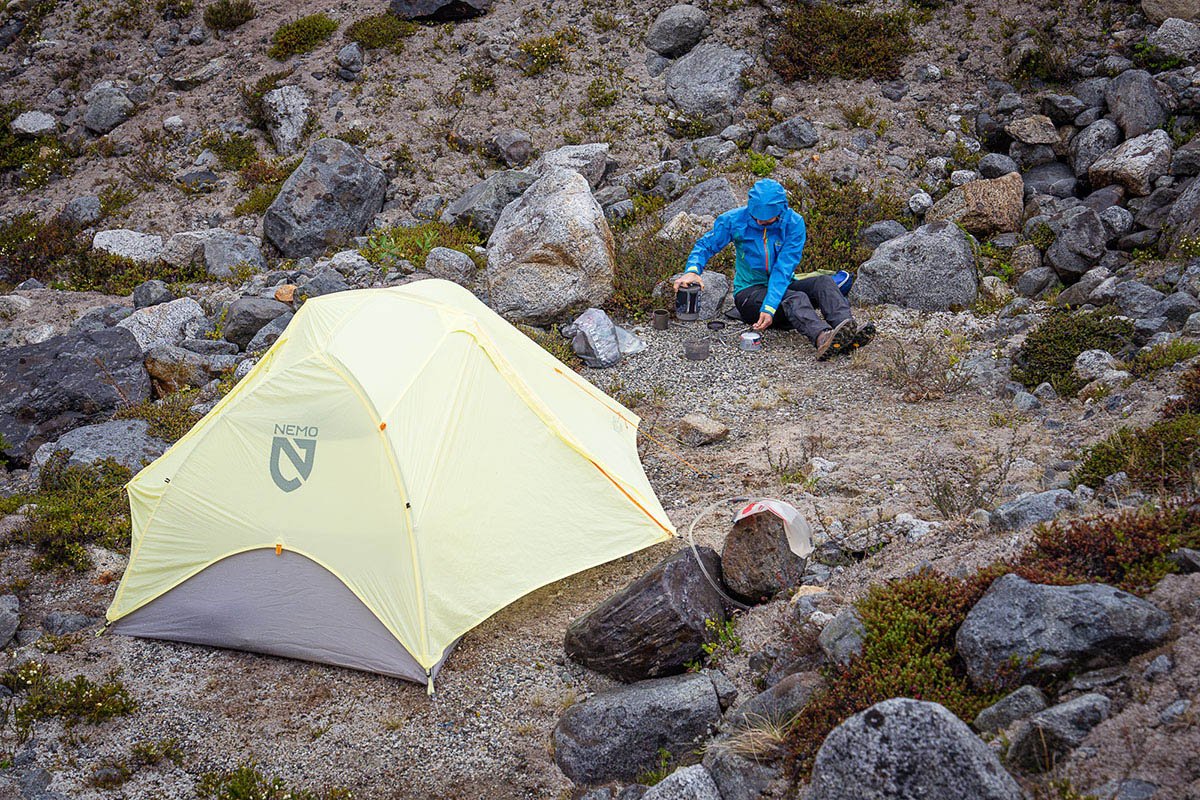
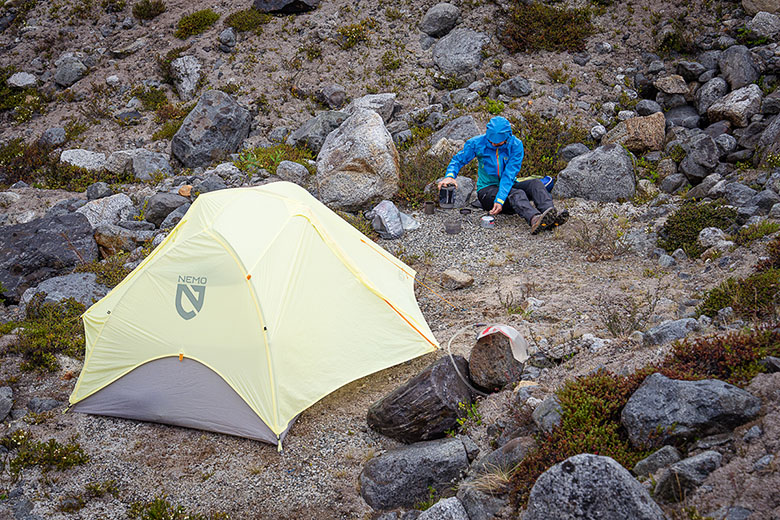
Price: $400
Packaged weight: 3 lb. 8 oz.
Floor area: 27.9 sq. ft.
Capacities: 2P, 3P
What we like: Excellent balance of weight and durability; built with Nemo’s typical attention to detail and a strong sustainability focus.
What we don’t: Tapered footprint detracts from livability—the 2P model is livable but tight for two.
See the Nemo Mayfly Osmo 2P
New Hampshire-based Nemo makes some of our favorite backpacking tents, from the ultralight Hornet Elite to the spacious and feature-rich Dagger. The Mayfly Osmo fills a nice gap between the two, with a hard-to-beat balance of weight and durability for new and committed backpackers alike. We recently put the two-person model through its paces in Chilean Patagonia and didn’t find too many major concessions. Livability and organization aren’t particular strong suits, but the Mayfly makes fewer compromises than expected for the weight. Below are our thoughts on the Mayfly Osmo 2P. To see how it stacks up to the competition, check out our article on the best backpacking tents.
At 3 pounds 8 ounces all in, the Nemo Mayfly Osmo 2P falls squarely into the lightweight tent category. This pits it up against popular designs like the MSR Hubba Hubba (3 lb. 4 oz.) and Big Agnes Copper Spur HV UL2 (3 lb. 2 oz.), although both of those designs are fully freestanding. Among semi-freestanding competitors, the Mayfly is considerably heavier than Nemo’s own Hornet Elite Osmo 2P (2 lb. 1 oz.) and Big Agnes’ Fly Creek HV UL2 (2 lb. 4 oz.), but comes with notable upgrades in livability and durability. In other words, the Mayfly strikes a really nice balance: It’s competitively light without feeling overly compromised.
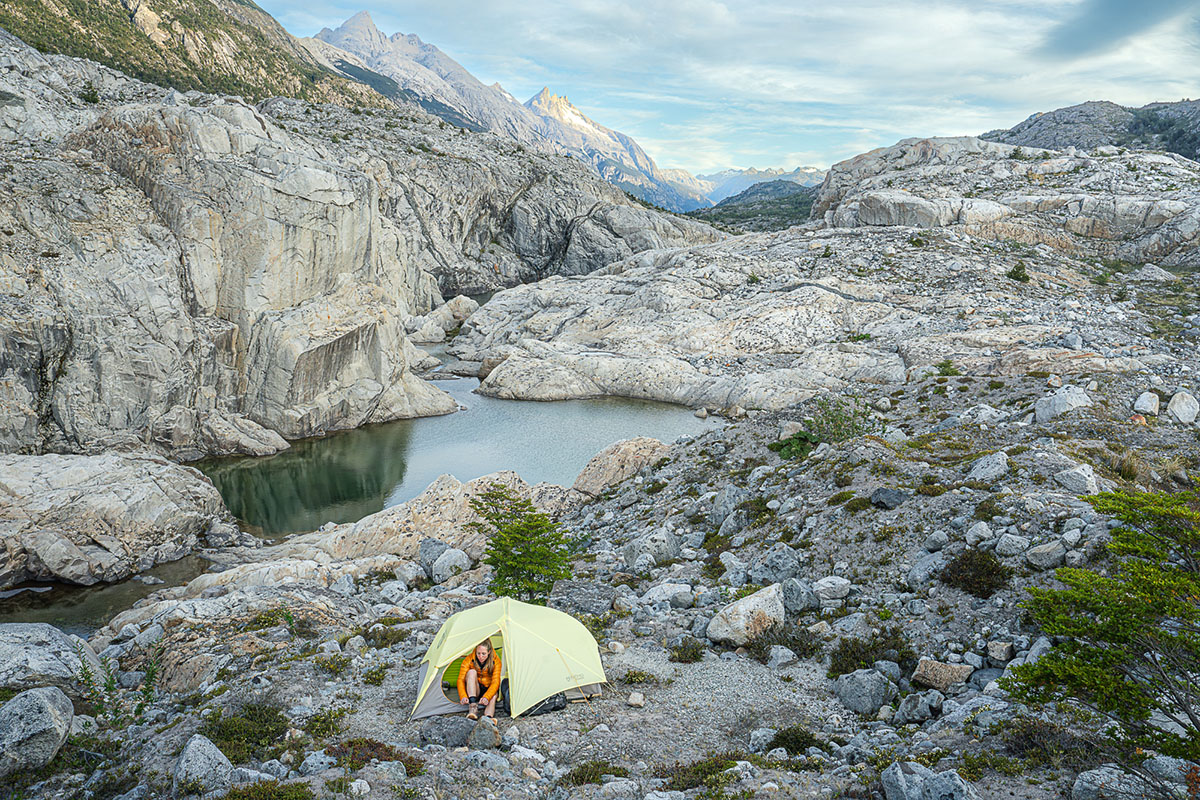
Weight and packability almost always go hand in hand, and the Mayfly stuffs down to a pretty compact 6.5 by 19.5 inches. The struts at the foot end (one at each corner) do make it a little harder to pack down—I often had to pause and rotate them when compressing the tent body down into the stuff sack—but it’s a fairly quick and easy process. And I like Nemo’s Divvy Cube design, which allows you to separate the poles, stakes, and body/rainfly for splitting the weight with a partner. I didn’t utilize this option on our trip but still had no problem fitting the full Mayfly in a loaded-down backpacking pack that contained five days worth of food and gear.
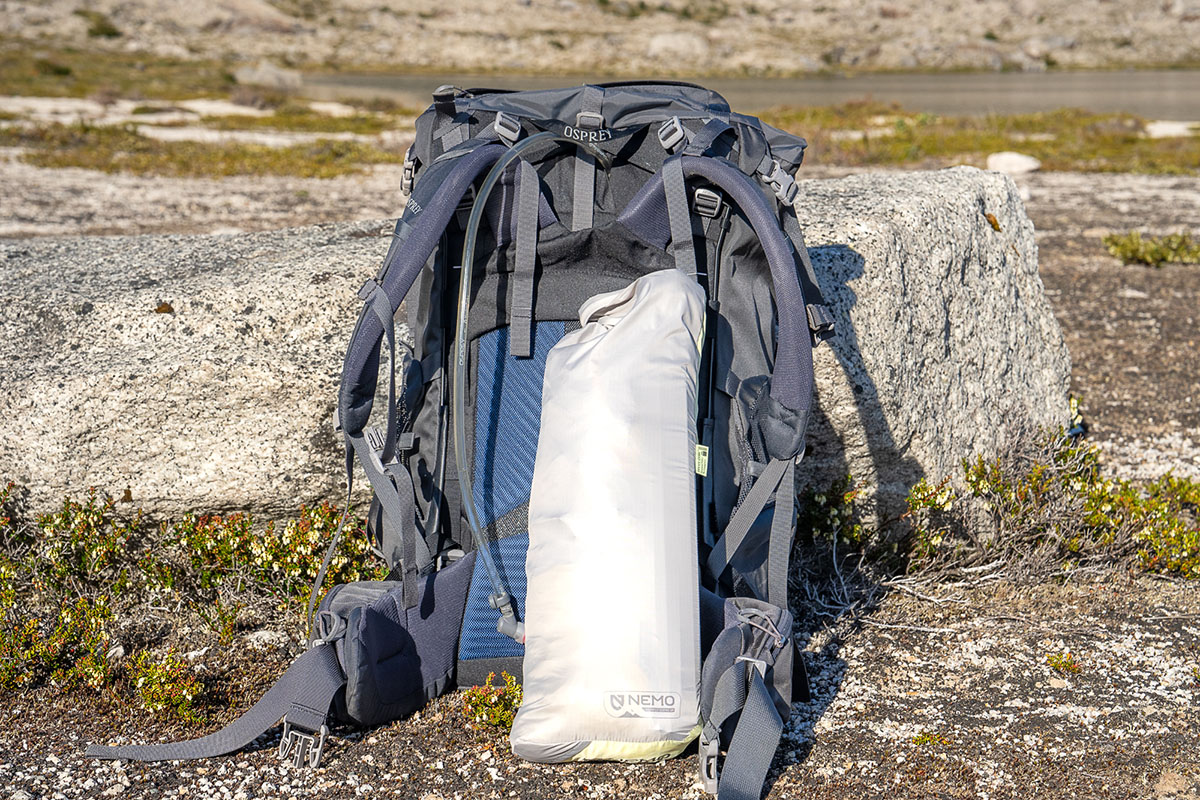
With 27.9 square feet of floor space and a tapered footprint, the Mayfly Osmo 2P isn’t the most spacious design but it's reasonably livable for two. The tent’s pre-bent poles really help maximize the interior, with a center ridge pole that stretches the walls up and away to create a decently roomy feel inside. The 42-inch peak height is also fairly generous, allowing me to sit up and change without having to hunch over. And the tent’s large doors make it easy to get in and out, with convenient tiebacks for securing them out of the way.
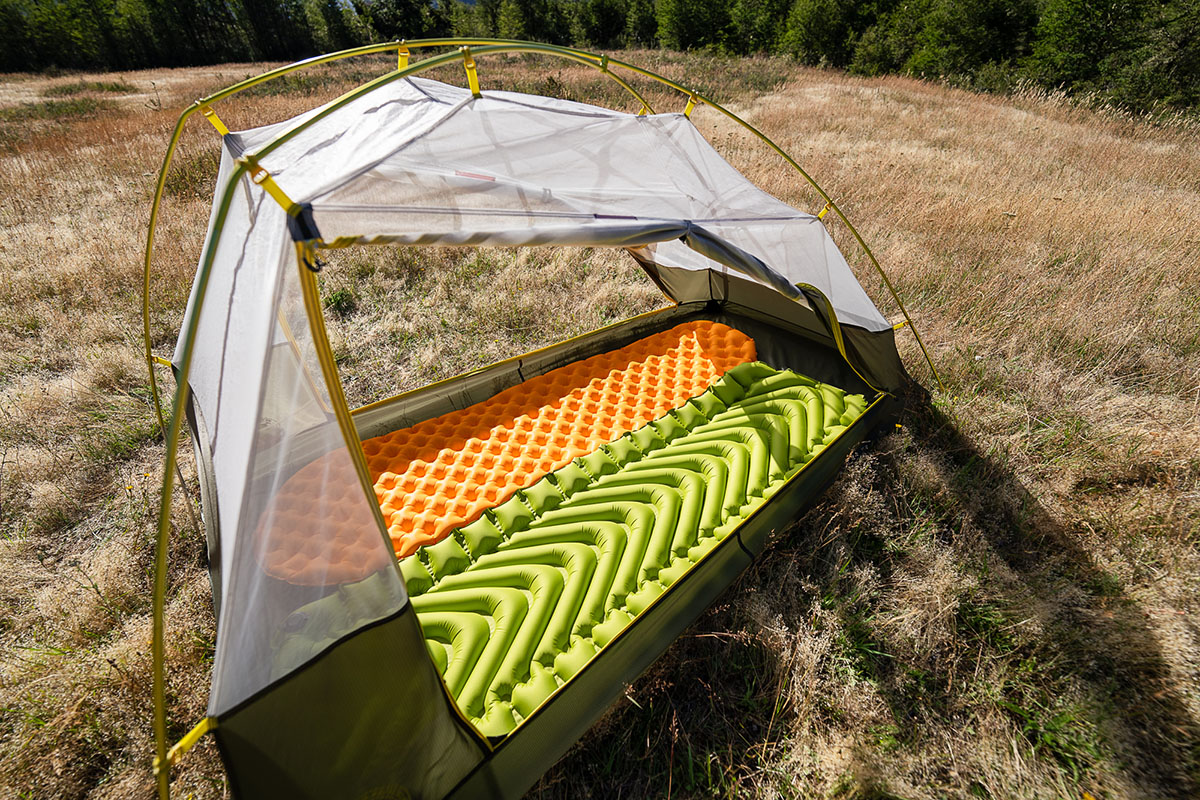
However, the Mayfly’s footprint is pretty modest. While I had ample space to move around when camping solo in Patagonia, adding another 20-inch-wide sleeping pad would undoubtedly be a little tight—especially at the foot end, where the tent tapers down to 43 inches wide (from 52 in. at the head). For sleeping head to toe with a partner, symmetrical designs like Nemo’s popular Dagger (which is 50 in. wide throughout) are much more functional. And lengthwise, I did have some extra room at my feet to stash gear (I'm 5'6" for reference), but taller backpackers may find the 85-inch length limiting (for comparison, the Dagger is 90 in. long).
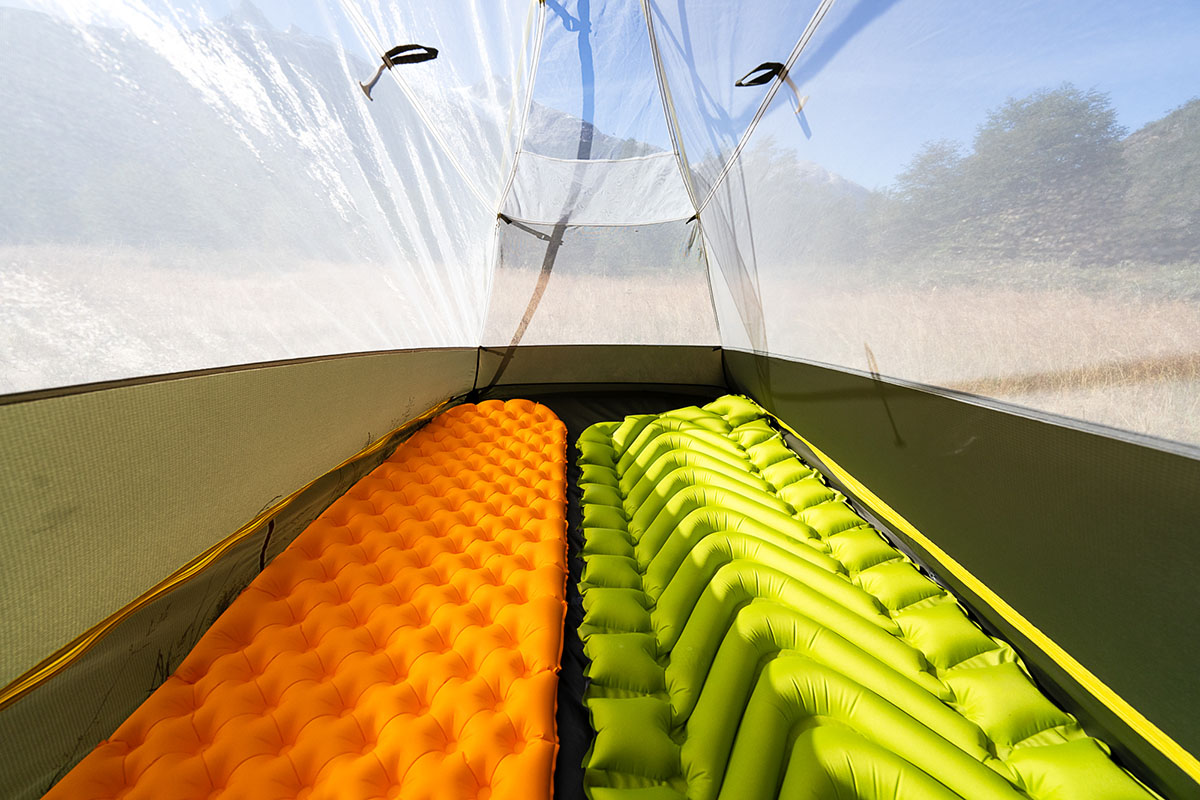
Many lightweight backpacking tents trim weight by using thinner materials, but that’s not the case with the Mayfly Osmo 2P. For starters, the 68-denier (D) ripstop polyester floor is impressively tear-resistant and notably thicker than what you get with most competitors. In fact, it’s the same thickness as Nemo’s 2-pound-heavier Aurora tent, which is designed to pull double duty for both car camping and backpacking. Nemo doesn’t provide a denier measurement for the rainfly since it’s made with their Osmo fabric, which uses two types of fibers, but it feels similarly hardwearing. And the smaller components are equally high-quality, from the smooth-operating clips and zippers to the aluminum poles and stakes. A final note: Nemo does sell a compatible footprint for $70 ($80 for the 3P tent), but the Mayfly’s floor has proven to be plenty durable on its own.
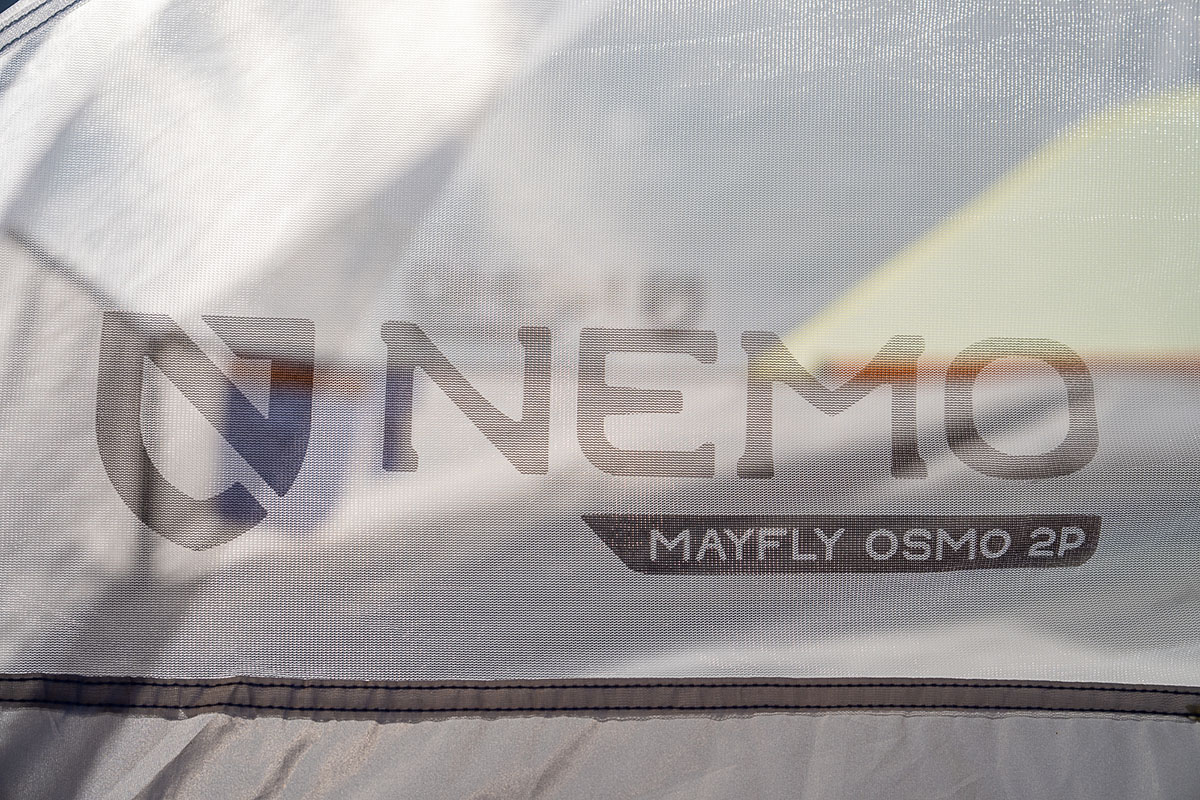
While less weather-worthy than many freestanding alternatives, the Mayfly Osmo 2P is perfectly serviceable for three-season use. The Osmo fabric mentioned above is designed to be inherently resistant to moisture and stretching when wet, and it’s done just that. I was initially worried about the raised ends of the rainfly, which arc upwards between the corners and leave a section of single-wall fabric exposed to moisture, but it proved to be a non-issue during testing. The heavy rain on our trip was pretty short-lived, but the Mayfly showed no signs of weakness. And in mild weather, it’s easy to roll back and secure the doors and rainfly.
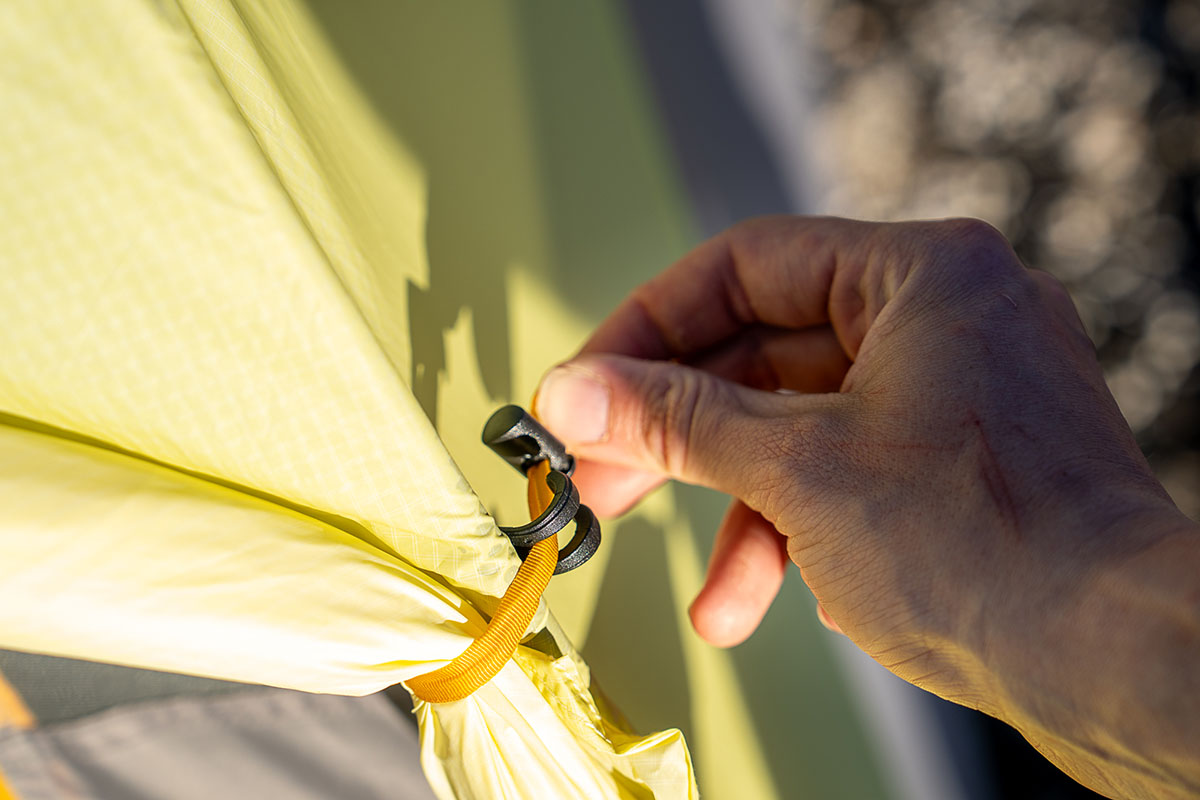
Wind resistance is a different story. Like most semi-freestanding backpacking tents, the Mayfly has just one pole running down its spine, which results in less structure and stability. The tent’s center ridge pole does add some support—unlike Big Agnes’ Fly Creek, which we found prone to caving in on both sides in blustery weather. But overall, freestanding tents with crisscrossing poles are far more reliable in rough and rowdy weather.
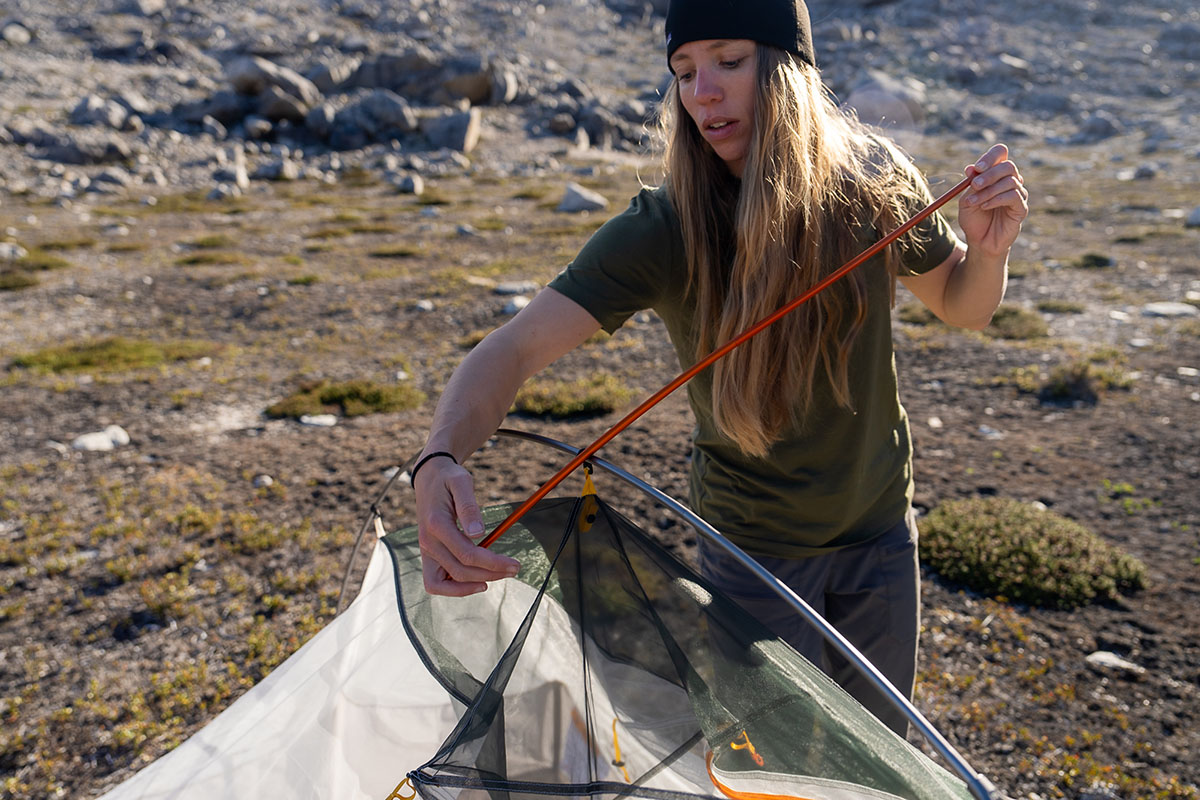
The Mayfly is an excellent ventilator with its double-wall build and generous use of mesh. Nemo also included a strut vent above each vestibule. With both open, there’s a noticeable boost in airflow inside the tent, and weather protection isn’t overly compromised thanks to the storm flaps covering the zippers. I’m not sure why Nemo opted to include diagonal sections of solid fabric on both doors—all-mesh doors would offer a little better ventilation—but the impact on breathability was minimal. All told, the tent kept me comfortable and condensation-free, even during a particularly warm and humid night in Chile (the same can’t be said about my colleague, whose single-wall tent was dripping by morning).
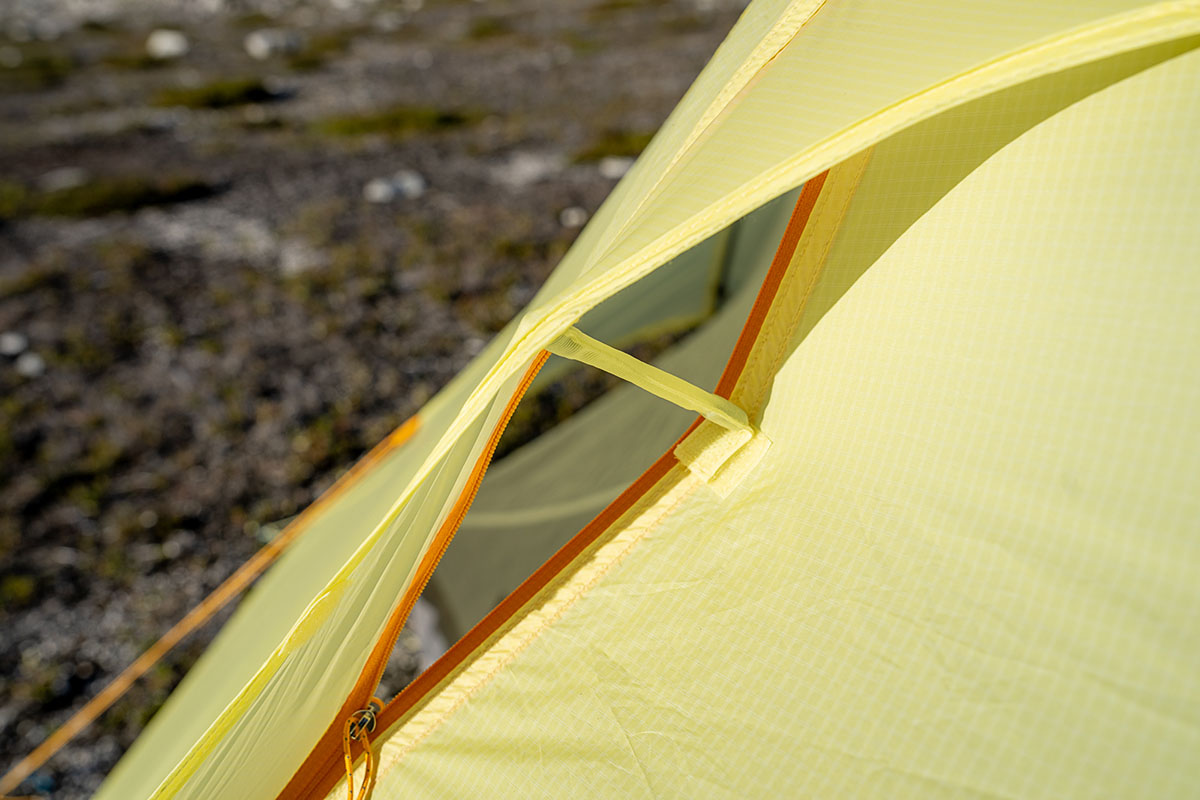
The Mayfly isn’t a standout in organization but checks all the requisite boxes. My only real complaint is the lack of pockets down low, which I often use to stash my headlamp and Garmin inReach. Instead, Nemo focused storage along the ceiling. Overhead, there are two small Nightlight pockets (one at each corner) that can be used for storage or diffused illumination from your headlamp, along with a larger pocket in the middle that I used for my beanie and liner gloves. The final pocket at the foot end is the biggest of the bunch and perfect for stashing a midlayer for quick access on cold mornings.
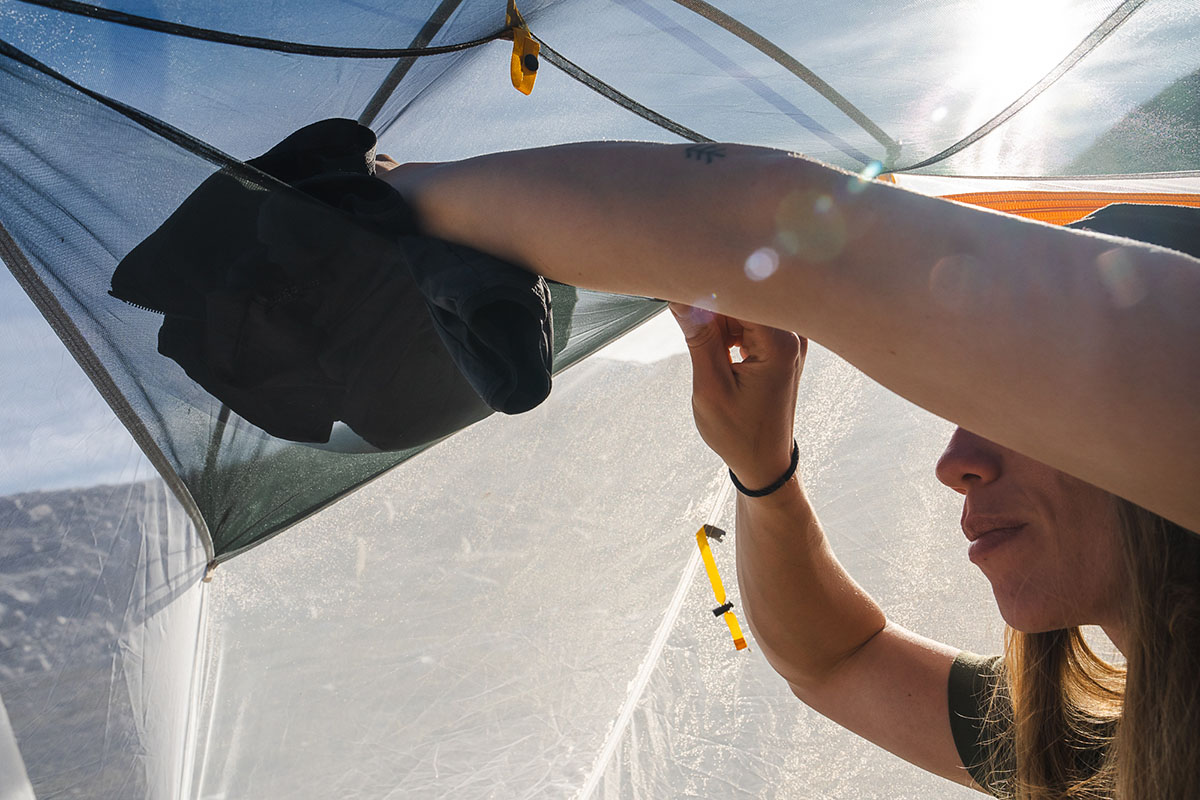
Along with two doors, the Mayfly boasts two vestibules that measure 7.1 square feet each. In testing, I was easily able to stash my backpacking pack and hiking boots in one vestibule without sacrificing the ability to get in and out on the same side. You can get considerably more space with Nemo’s Dagger 2P, which has two 11.4-square-foot-vestibules, but I found the Mayfly’s design to be entirely functional.
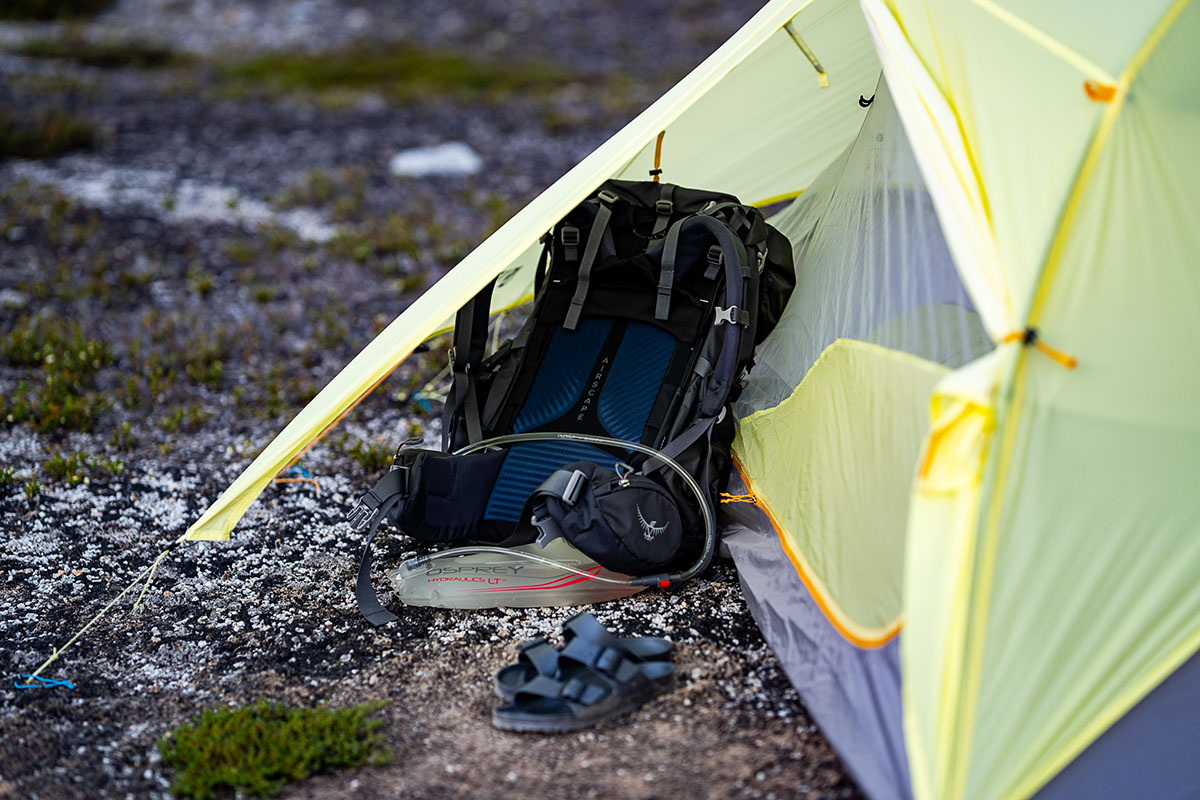
In short, the Mayfly Osmo 2P is incredibly quick and easy to set up, even for one person. The semi-freestanding structure is fairly intuitive: There’s a single Y-shaped pole with a smaller ridge pole running perpendicular toward the base of the Y to pull the walls up and away. The pole ends snap into Nemo’s socket-like Axial corner anchors, with color-coded webbing to quickly distinguish between the head and foot ends. The rainfly attaches by inserting the small metal pins into the corresponding slots, twisting until they’re perpendicular, and cinching everything down via the single-cord tensioning system. I do have some concerns about the pins popping out in strong winds, but they stayed solidly in place during testing.
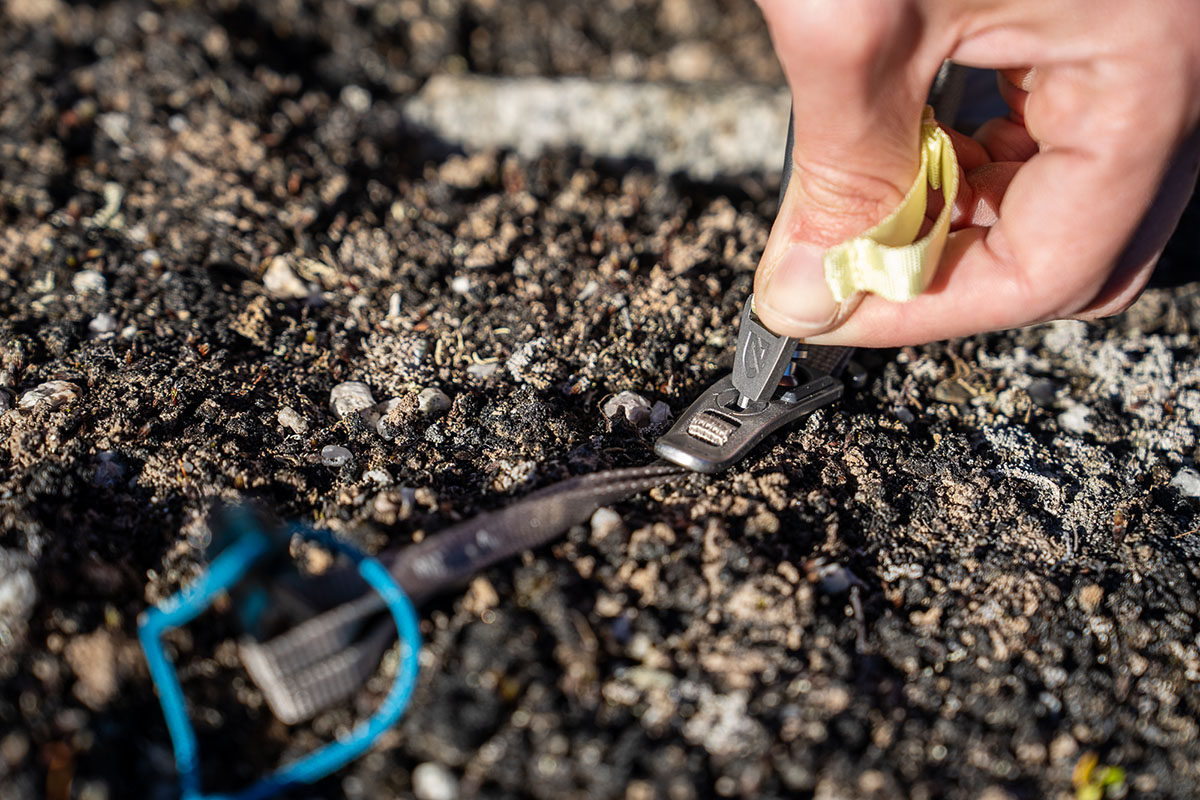
All that said, there are a couple downsides to the Mayfly’s semi-freestanding layout. First and foremost, it requires staking out to create a rigid frame and therefore can’t be easily picked up and moved around camp like a freestanding alternative (you’ll want to choose your location carefully). Additionally, Nemo only included eight stakes, which isn’t enough to utilize all of the guylines. If you anticipate getting out in blustery weather, you’ll certainly want to pack a couple more than what comes with the tent.
Nemo has been making serious strides on the sustainability front of late, and the Mayfly is a great reflection of their efforts. For starters, the proprietary Osmo fabric used for the rainfly is treated with a PFAS-free water-repellent finish, which forgoes the use of per- and polyfluoroalkyl substances—harmful chemicals known to have negative effects on human health and the environment. The fabric also meets the requirements for flame retardance without added chemicals and is made from 100% recycled polyester and nylon yarns. Finally, the fly is certified as bluesign-approved, which means it meets strict ecological and chemical standards to minimize environmental impact. All told, we’re happy to see Nemo expanding the use of their Osmo fabric and commend them for their ongoing sustainability initiatives.
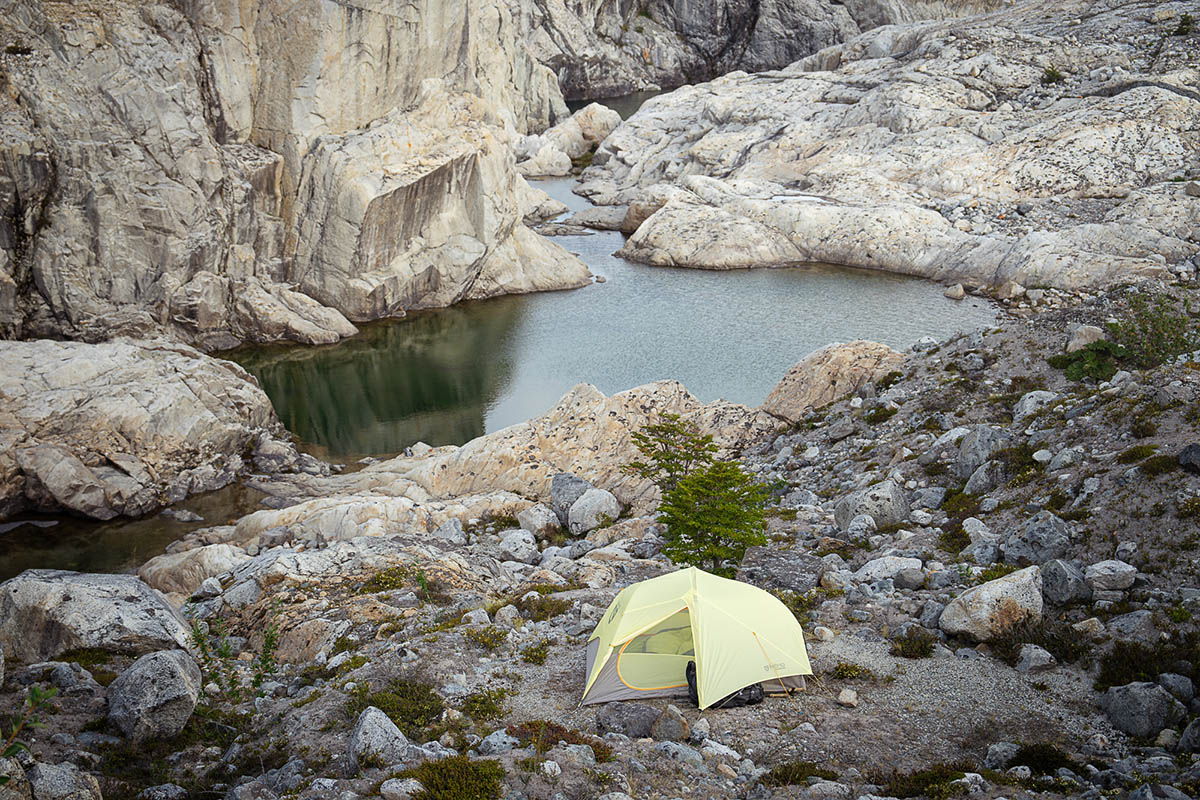
We brought the two-person Mayfly to Chile for testing, but Nemo also sells the design in a larger three-person version for $60 more. Comparing the two, the Mayfly Osmo 3P checks in 9 ounces heavier (along with an increase in packed size), offers an additional 11.8 square feet of floor space, and boasts 3 more square feet of total vestibule space (1.5 on each side). Otherwise, the two tents share largely identical feature sets and overall constructions, including the use of Nemo’s proprietary Osmo fabric and sustainability efforts.
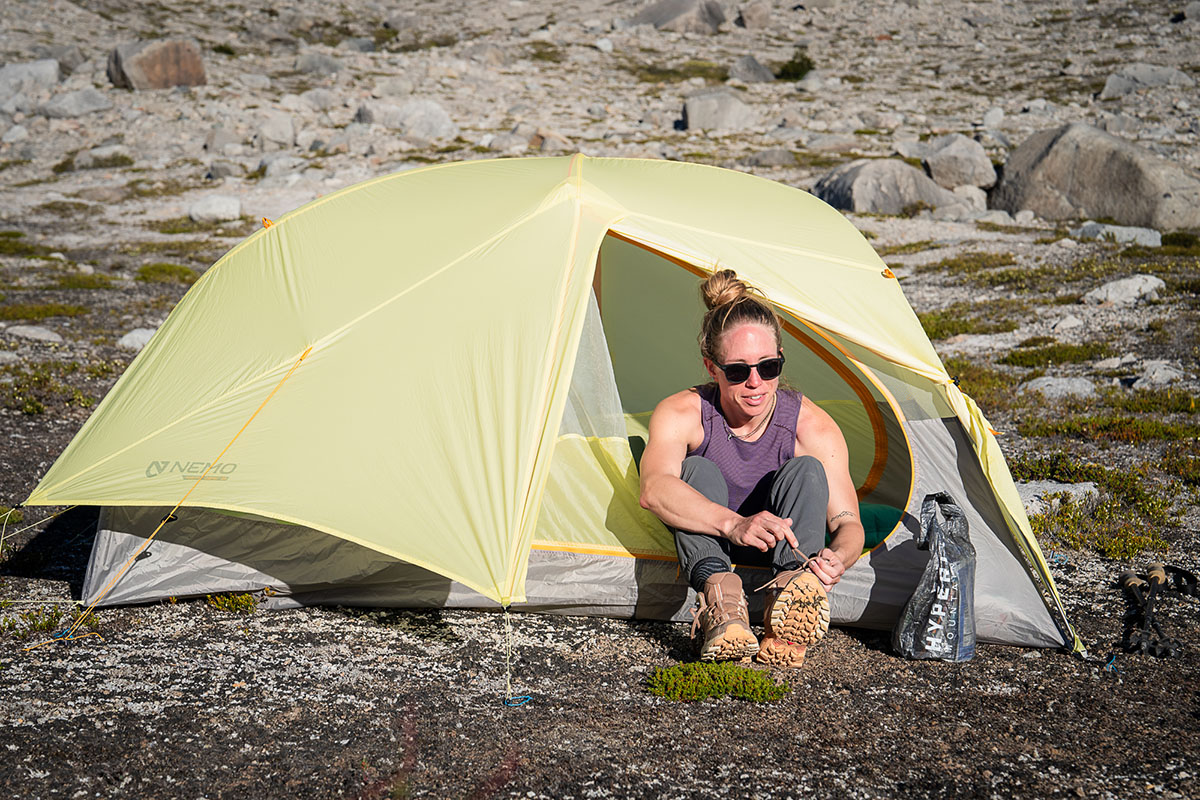
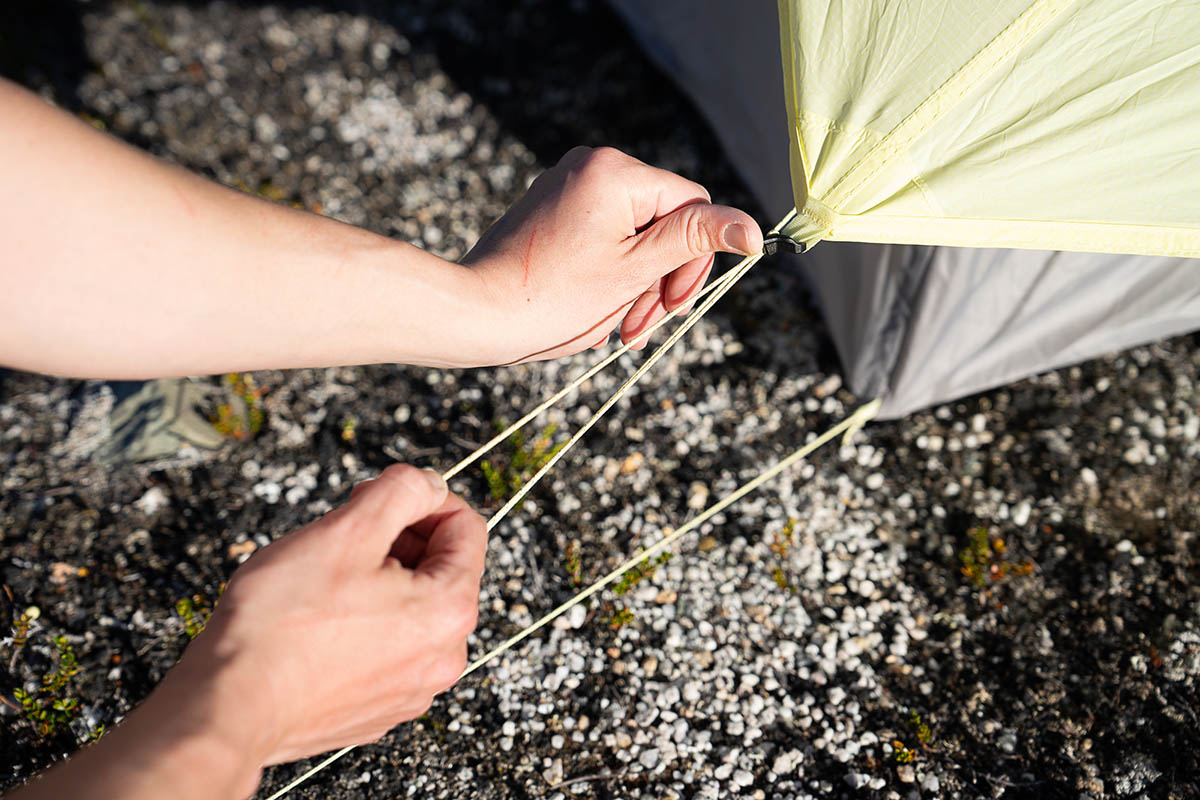
| Tent | Price | Floor | Height | Capacities | Weight | Packed Size | Doors |
|---|---|---|---|---|---|---|---|
| Nemo Mayfly Osmo 2P | $400 | 27.9 sq. ft. | 42 in. | 2P, 3P | 3 lb. 8 oz. | 6.5 x 19 in. | 2 |
| Nemo Dagger Osmo 2P | $530 | 31.3 sq. ft. | 42 in. | 2P, 3P | 4 lb. 2 oz. | 6.5 x 19 in. | 2 |
| Nemo Dragonfly Osmo 2P | $500 | 29 sq. ft. | 41 in. | 2P, 3P | 3 lb. 2 oz. | 5.5 x 19.5 in. | 2 |
| Big Agnes Tiger Wall UL2 | $450 | 28 sq. ft. | 39 in. | 2P, 1P, 3P | 2 lb. 8 oz. | 5.5 x 18 in. | 2 |
| MSR Hubba Hubba 2 | $550 | 29 sq. ft. | 40 in. | 1P, 2P, 3P | 3 lb. 4 oz. | 4.5 x 19 in. | 2 |
The Mayfly strikes a great balance between weight and durability for entry-level backpackers, but it’s not the most spacious or feature-rich design. For a boost in livability and organization, Nemo's Dagger is a longtime favorite of ours. Comparing the two-person versions, the Dagger is heavier than the Mayfly at 4 pounds 2 ounces all in, but it offers an additional 3.4 square feet of interior space, 8.6 square feet of extra vestibule storage, and a symmetrical footprint that makes it easier to sleep head-to-toe with a tentmate. The Dagger is also longer by a considerable 5 inches, which is particularly noteworthy for taller folks, as well as fully freestanding (read: easier to pitch). It’s a steep investment at $530, but avid backpackers will likely find the upgrades worth it.
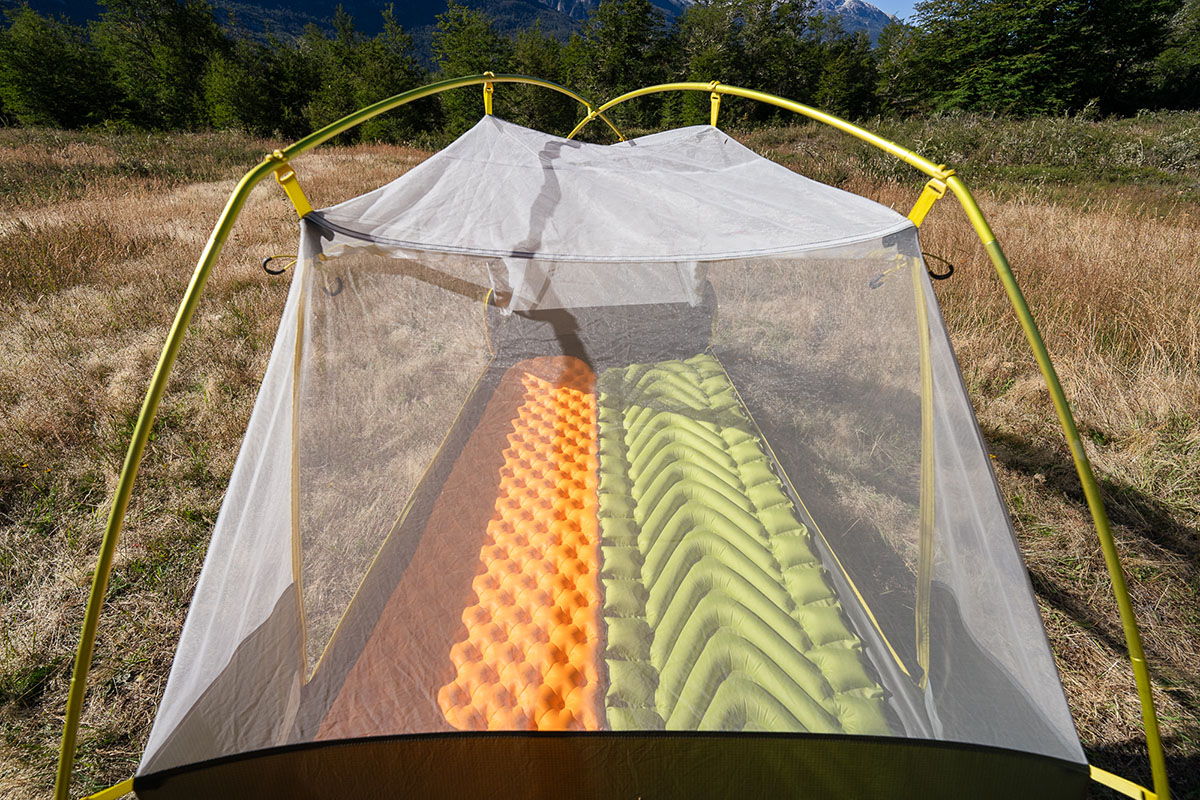
Next up is another Nemo design to consider: their Dragonfly Osmo 2P. Despite being fully freestanding, the Dragonfly undercuts the Mayfly in weight by 6 ounces and packs down a little smaller, too. Overall livability is also similar between the two tents, with just minor differences in floor area and peak height. However, in addition to costing $100 more than the Mayfly, the Dragonfly comes with compromises in vestibule area—the asymmetric design limits the amount of usable space—and durability. In the end, unless the Mayfly’s small weight penalty or semi-freestanding design are dealbreakers for you, we consider it the better value.
Moving away from Nemo’s lineup, the Big Agnes Tiger Wall UL2 shares a very similar shape and overall design to the Mayfly but for a full pound less. Big Agnes accomplishes this by using much thinner and more delicate materials throughout, along with reducing peak height to 39 inches. Otherwise, the two designs stack up closely, including similar floor areas, vestibule space, and two-door-and-vestibule layouts (not always the case with sub-3-lb. tents). Importantly, the Tiger Wall also retains a center ridge pole that does a great job maximizing headroom and overall livability. If you don’t mind taking added care when pitching and packing away your backpacking tent, the Tiger Wall strikes us as the more competitive all-around design (and not far off price-wise at $450).
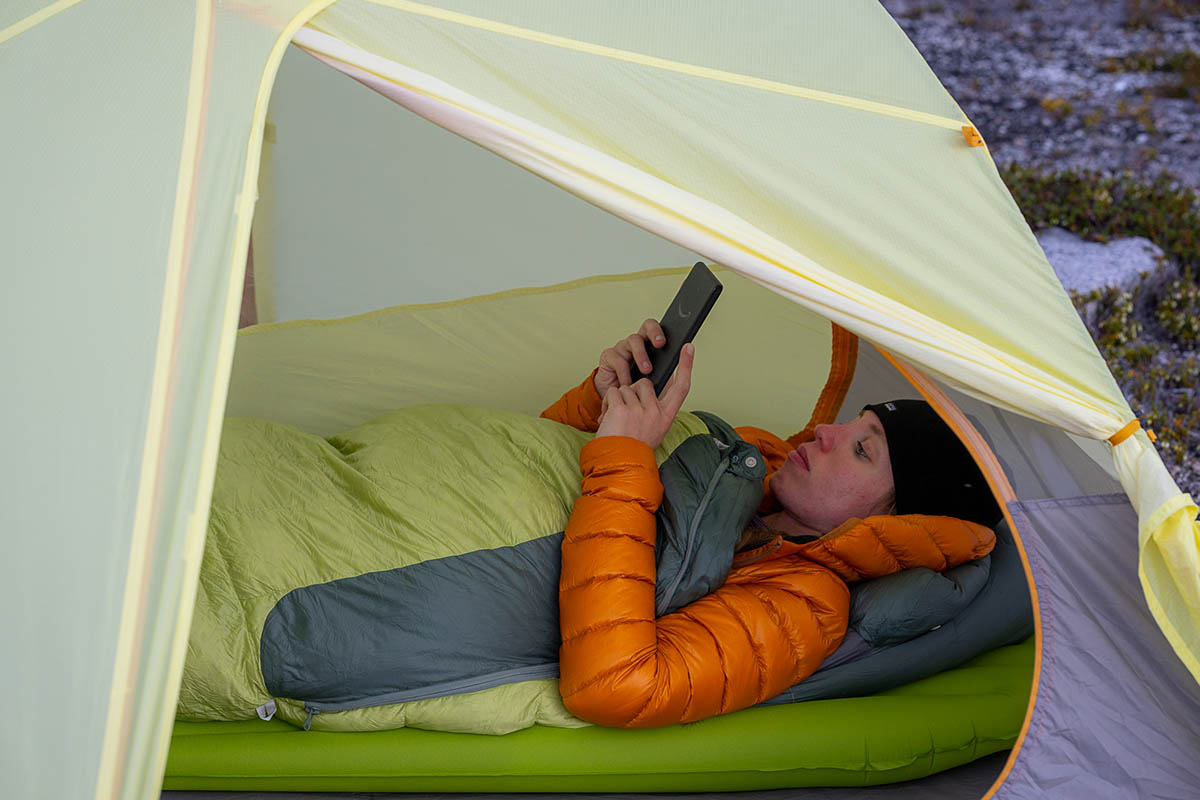
A final alternative to consider is MSR’s Hubba Hubba. Like the Mayfly, the MSR is competitively light at 3 pounds 4 ounces, built to last with tough and abrasion-resistant fabrics, and decidedly modern with a well-executed pole structure that opens up the interior. However, despite the minor difference in floor area (the MSR is 1.1 sq. ft. bigger), the Hubba Hubba feels considerably roomier thanks to its symmetrical footprint. The Mayfly is 2 inches taller and 1 inch longer, but the tapered foot end makes it all but impossible to sleep in opposite directions (head to toe). The MSR is undeniably spendy at $550, and its solid walls don’t bode well for ventilation, but the boost in livability—without compromising on weight or toughness—is substantial.
If you’re thinking about buying gear that we’ve reviewed on Switchback Travel, you can help support us in the process. Just click on any of the seller links above, and if you make a purchase, we receive a small percentage of the transaction. The cost of the product is the same to you but this helps us continue to test and write about outdoor gear. Thanks and we appreciate your support!
Depending on the seller, most products ship free in the United States on orders of $50 or more. International shipping availability and rates vary by seller. The pricing information on this page is updated hourly but we are not responsible for inaccuracies.